What We Lost 2010 – Shanghai’s Architectural Losses Last Year
Posted: February 3rd, 2011 | 12 Comments »Apologies for the delay in pulling this together. And apologies for a longer than usual post. As it’s the holidays hopefully you’ll have time to read it all.
It’s become somewhat of a sad tradition to gather together the architectural losses of the year in Shanghai to record them – see the 2009 list here. With the frantic pace of destruction continuing full force at the moment Shanghai is losing architecture and heritage at a terrific rate. A few things about 2010 – of course EXPO year – are worth noting:
1) the pace of destruction in no way slowed but significantly increased throughout the year with EXPO related themes cited by officials for most destruction – road widening, ‘civilising’, ‘harmonising’, ‘new Shanghai’ etc etc and of course the specious slum clearance argument.
2) we should all be clear now that ‘preservation orders’ supposedly placed on buildings to protect them have no validity whatsoever and are merely cosmetic. Supposedly preserved buildings continue to be bulldozed regularly, often at 2am!!
3) contrary to popular opinion (at least among many foreigners I speak to in Shanghai) the former French Concession is in no way under any special protection – as well as ersatz nonsense such as the non-sensical Sinan Mansions development (knock down perfectly fine old buildings to build faux replicas that can operate as coffee shops and then add a huge TV screen in the middle of it!) as well as other demolitions across Frenchtown clearly testify (the junction of Huashan and Xingguo Roads is the latest block to be threatened and hopefully we won’t be including it on the list of the lost next year). The same is true for the supposedly widely preserved former Jewish Ghetto in Tilanqiao, which is also being picked away at again.
4) the amount of lilong and shikumen housing destroyed in the last 18 months has accelerated – it is clear that none of this housing, unique to Shanghai and Shanghai only, is intended for preservation except as generic super-private policed spaces such Xintiandi. There is clearly no understanding that where people have lived is as worthy of saving and maintaining as where they banked!
5) the bulldozers have moved with a vengeance into northern Shanghai – Zhabei, Hongkou, Tilanqiao and Yangpu are all losing large swathes of housing, commercial premises and, in Yangpu particularly, rare examples of industrial architecture.
In short 2010 was not a good year…it is impossible to list all the losses (though some not mentioned in this list have been noted elsewhere on this blog in the last 12 months)…here are some of the most notable and regrettable.
Weihai Road –
The Weihai Road (formerly Weihaiwei Road) clearances have been significant and widespread and the single biggest loss of important city centre architecture and heritage in 2010. The West side of one block of Maoming Road North (Moulmein Road) between Weihai and Nanjing West Road (Bubbling Well Road) is all now gone completely (see Google Earth image below).The loss has been blamed on the need for construction of metro lines 12 and 13.
Of particular note as a loss at this site were several villas. The first, close to the junction of Maoming Road North (Moulmein Road) and Nanjing West Road (Bubbling Well Road) was significant as it was one of the last survivors of the period of property development after the Bubbling Well area became part of the International Settlement in 1899. It was built by the noted architectural firm of Atkinson and Dallas in 1902 and occupied by a British doctor. The property originally had a huge lawn (where the low buildings in the foreground are). It was taken over by the American YWCA in 1938. It is now gone – below is what it looked like shortly before demolition – as you can see it was in perfectly serviceable condition.
Several other villa properties close to Shimen No.1 Road and Weihai Road were also lost. Both were integral to the former Zhang Gardens site redeveloped from a private garden for well-healed Chinese in the mid 1920s and 1930s into a highly sought after development within easy reach of the Bubbling Well Road. Chinese financiers and bankers willingly paid high prices for these properties. As you can see below both the exteriors and interiors (far rarer) were extremely well maintained. Now gone.
On a final note on Weihai – the destruction of Weihai Road looks far from complete yet. The small artists community that has grown up around 696 Weihai Road, a series of rather interesting former opium warehouses, appears doomed with no leases being renewed. ‘Xintiandi-isation’ appears to be the fate of 696, which we know from Xintiandi is ultimately no different to destroying them anyway. Worryingly the current landlord of the properties – the Jing’an Social Security Bureau – also controls the leases (and therefore the fate) of the Jing’an Villas residential compound nearby – the loss of which would be major on an international scale.
As to the destruction along Maoming Road North – it is on the eastern side of the street. To get an idea of the architecture lost, here is a shot of the western side of the street that, for now, remains intact.
Maoming South/Fuxing Middle Roads –
The ongoing development here has seen a whole block removed last year that included the former Canidrome dog racing track, hai-alai facilities and boxing arena. Also lost was the architecturally important and wonderfully domed Canidrome Ballroom. This was also the removal of a later episode of Shanghai’s history, the Canidrome was used during the Cultural Revolution for mass denunciations by the Red Guards. It later became a flower market. Now the entire block is destroyed which involved the unnecessary removal of several properties along Maoming Road South (formerly Rue Cardinal Mercier) and Fuxing Middle Road (Rue Lafayette). The best known of these buildings was the property that for many years housed The House of Blues and Jazz (below), which was in a well maintained state of repair.
There was also a pleasant courtyard house on the corner that was somewhat obscured by shops and restaurants added haphazardly on to the frontage but was also in a serviceable state of repair. That is now where the access road to the building site runs as shown below. I have no idea what the ridiculous vanity structure is that has been built on the old Canidrome.
The Former Gardens of the Morriss Estate –
These gardens, long accessible to the general public, were on the land of the former Morriss family estate between Maoming South Road (Rue Cardinal Mercier) and Ruijin No.1 Road (Route des Soeurs). The Morriss family were extremely wealthy from banking and bullion trading and also owned the North-China Daily News. They were fanatics for both horse and dog racing and enjoyed their close proximity to the Canidrome. The house has latterly become the Ruijin Hotel and many will remember the gardens from sitting outside at Face bar or the Xiao Nan Guo restaurant in the compound. Along with Fuxing Park (formerly French Park), the gardens were one of the only green spaces in the densely urban former French Concession. This Google Earth image shows the lost gardens – a million or so Chinese wedding photos will recall them!
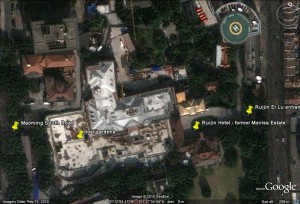 With the gardens now gone, concern remains for several well maintained villa properties that front on to Fuxing Road. They appear to still be in good condition though the building site’s access road is adjacent and the constant dirt and vibration from the trucks cannot be doing the structures much good. Here are part of the gardens as they were prior to their wholesale destruction. They were rather an oasis of calm and contentment in a city rather lacking in both!
With the gardens now gone, concern remains for several well maintained villa properties that front on to Fuxing Road. They appear to still be in good condition though the building site’s access road is adjacent and the constant dirt and vibration from the trucks cannot be doing the structures much good. Here are part of the gardens as they were prior to their wholesale destruction. They were rather an oasis of calm and contentment in a city rather lacking in both!
Dongdaming Road, Betwen Gongping Road and the Xinjian Road Tunnel
If there is a theme to this list this year then it is that preservation cannot just be about banks, former schools and administrative buildings, it has to also be about housing and industrial architecture if the story of a city’s development is to be maintained and told completely through its surviving heritage. In 2010 large swathes of Hongkou and the former International Settlement north of Suzhou Creek have gone – road widening and slum clearance are the two major (and invariably specious – see posts on official slum creation) given.
The stretch of Hongkou between Dongdaming Road (formerly Seward Road) starting from Gongping Road (Kung Ping Road) toward the XinjianLu Tunnel is pretty much all gone. Many of these properties were distinctively part of the former Japanese Concession with trademark locks, name plaques and interior design revealing strong Japanese influences. Older resident referred to the buildings as ‘Japanese shikumens’ – making them a unique subset of a unique Shanghai architectural style and so therefore even more valuable architecturally and in terms of heritage – doubly unique! The roofs had short walls with square blocks fitted in the base, used for shoving canons into them, or so resident believed. I would note that for more pictures of the destruction of this area of town see street photographer Sue Anne Tay’s Shanghai Street Stories blog.
The first two pictures below show the extent of the destruction in the area – the third shows one remaining frontage and indicates the sort of quality of architecture that has been lost on a significantly large scale in this area of northern Shanghai.
That’s the major list for 2010. Any other sites noticed please let me know – this is a personal rather than a comprehensive list. However, a few other things of note:
i) several buildings along the formerly wonderful Love Lane (Wujiang Road) came down this year – only one original structure is left on that street now and is due for demolition imminently.
ii) I have not had a chance to get there but I am told that the final remaining parts of the old General Hospital that sat along the Suzhou Creek were pulled down this year.
iii) I am also reliably informed that massive works are ongoing at the Wujing’s compound on Huaihai Middle Road (Avenue Joffre) close to the Huaihai Apartments and the (much mucked about) Shanghai Music Conservatory. I used to live in the penthouse of the Huaihai Apartments and the balcony looked down onto the Wujing compound – a fine old mansion that had not, at that time (late 1990s) been spoiled too much.The site is heavily guarded and so I cannot confirm that the mansion in the grounds has been torn down – will investigate and report back. Sounds like a job for Google Earth!
iii) I would note the destruction of the corner of Guangyuan Road (formerly Rue Picard-Destelan) and  Huashan Road (Siccawei Road, later Avenue Haig) to the west and by Xujiahui (Sikawei). I blogged on this last year.
iv) as far the Old Town goes – the ongoing destruction of the large block on Dongjiadu Road that intersects with Zhongshan South Road, south of the bund) and includes Lanyi Matou Road etc which surrounds Shangchuan Huiguan (商船会馆) or the Merchant Shipping Hall in the south part of Old Town. Reportedly, the plan is for the the Hall to be refurbished, the rest is flattened land for a “new” Bund. This is a very massive undertaking and represents a potentially large amount of flattening around the old Quai de France.
v) the current destruction of the block encompassing Huimin Road (formerly Baikal Road) between Tongbei (Thorburn), crossing Liaoyang Road (Liaoyong Road) and running as far as Dalian Road (Dalny Road). I blogged on this last year too.
vi) the loss of housing in the former ‘Japanese Colony’ on and around Tanggu Road (Boone Road) covered here.
vii) the loss of a compound adjacent to the old Shanghai Watch Company on Yulin Road (Yuuin Road) covered here.
viii) some may consider it minor but the old carved iron factory gates on Panyu Road (Columbia Road) were worth saving I think – the former cotton mill dormitories adjacent to them on Lane 209 do not appear to be long for this world – see former post.
ix) the tragedy that was the destruction of the Jesuit Recoleta Mission (Misioneras Agustinas Recoletas)Â on Rue Moliere (Xiangshan Road) covered here. Another peck away at Frenchtown.
x) I have been told about large-scale destruction along Moganshan Road (Mokanshan Road), a mixture of old factories and art spaces but haven’t been down there yet.
xi) and finally, of course, the utter and total gutting of JG Ballard’s former childhood home out in the former Western Roads Area at the junction of Xinhua Road (Amherst Avenue) and Panyu Road (Columbia Road) covered here.
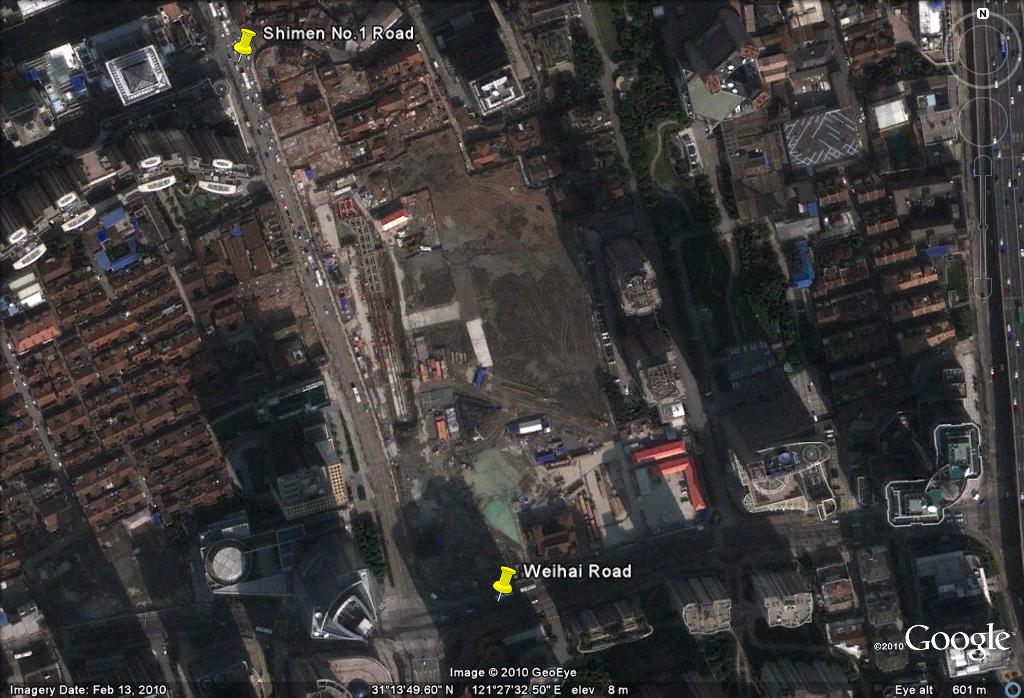
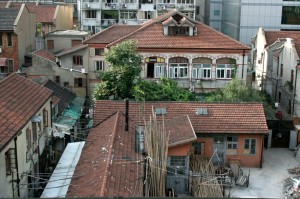
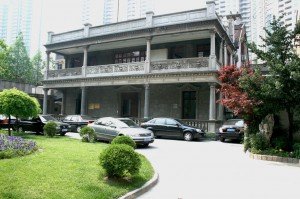
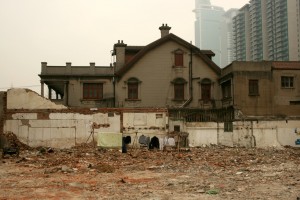

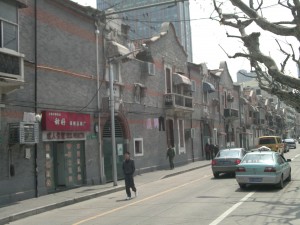
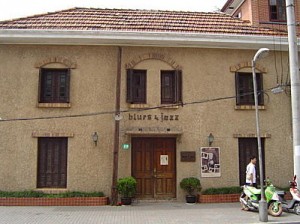
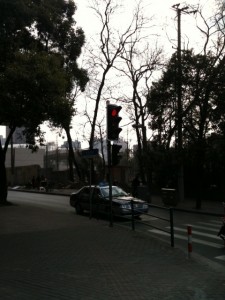
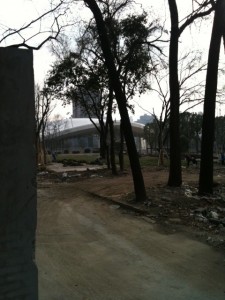
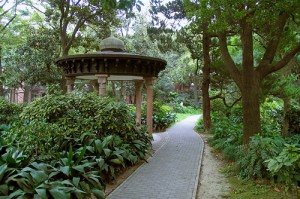
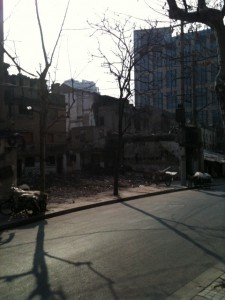
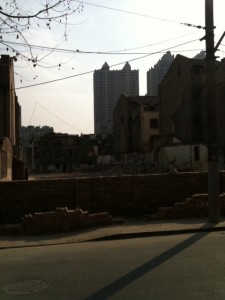
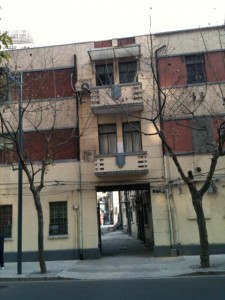
I am chinese and I’m shocked by the way the government is doing :( It’s untolerable, I wish we could have another revolution one day.
Being British, I like to think we have more than a passing interest in preserving history, so it really does break my heart that old Shanghai is being ripped down for shiny new buildings.
It could be cultural, but to me a great city is a mix of old and new, respecting the effort and planning that went into making a city what it is today. The old buildings of Shanghai are/were beautiful and clearly built to last. The mansions and lane houses are what makes this city great, not just the sky scrapers and new compounds.
It’s also a shame that the new buildings that go up seem to fall foul of ‘Made In China’ syndrome….after a couple of years they start to show signs of neglect and incompetence.
London is a shining example of how to mix the old and the new, i just wish the local Government here in Shanghai would stop for a second and think that a world class city isn’t built on how many skyscrapers or coffee shops you have, it’s built on the soul of the city, and that comes from history.
Just because we laowai value and venerate these buildings, it doesn’t stand to reason that the Shanghainese ought to. After all, they are remnants of an era when the city was colonised and ruled by unequal treaties.
To Carla Posing as “We Laowai”,
These buildings are torn down not for reason “they are remnants of an era when the city was colonized and ruled by unequal treaties”, rather “the bogeyman is the culture itself demanding that it all be new, big and flashy, and the attitude common among Chinese ‘that piece of land is so-o-o-o valuable’ ( 那塊土地很值錢).”
It’s lucre not principle that is the heart of the matter, coupled with the aesthetic sensibilities of a grass carp.
This is a really excellent and incisive posting. It is a terrible shame to see such great architecture destroyed – and a fabulous city being reduced to a glass-and-chrome skyrise monstrosity.
To the person who wrote “Just because we laowai value and venerate these buildings,” I hope you are suitably ashamed for turning a global debate about historical preservation into a cheap ‘us vs them’ shot.
I presume you said the same when the cliffside Buddhas were destroyed in Afghanistan? Would you similarly advocate razing the monumental churches and cathedrals of Central and South America, the castles dotted across the landscapes of northern Europe or the Moorish buildings of southern Spain? These are just mere examples of architecture as art that were mostly built on strips of land that were not within the map borders of those who financed and constructed them.
The reason for preserving these fabulous structures is not to stand as memorials to ancient invasion or colonialisation, but to recognise the history of the land on which an enduring narrative has been played out.
National borders are largely arbitrary at best, but if you really believe that the destruction of Shanghai’s great buildings is because the Shanghainese don’t appreciate their cultural value, then I guess you weren’t stood alongside tens of thousands of local people on the waterfront on a late March Sunday last year when the re-landscaped Bund was reopened to the public. If you were, you wouldn’t write such risible nonsense.
Thanks for your Article!
Yes, We Lost many old architectures in Shanghai(even in China) last year, And it’s will go on…
My Photos of Lost old architectures of Shanghai( In Chinese):http://www.douban.com/photos/album/29245928/
please send some details of yourself and work and we’ll do a post to the pictures, which look excellent
They are more than happy to tear down Chinese buildings with no foreign influence at all. It’s all about getting rich. The only reason the Great Wall is probably standing is because it’s a tourist attraction and makes money.
Hi, Paul
Here is a Interview of me by Sue Anne:http://sueannetay.webfactional.com/?p=1215
Actually, I kwon your blog web address also from her blog.
and my parts of photos your can check here(in Chinese)http://www.douban.com/people/shanghai2007/photos
ps. Happy Chinese new year~
Hello, Paul;
Great post despite the sad subject–especially for those of us who have known Shanghai over the years.
I’m curious about your second point:
“we should all be clear now that ‘preservation orders’ supposedly placed on buildings to protect them have no validity whatsoever and are merely cosmetic.”
After a decade’s absence from Shanghai I was quite thrilled to find an apartment along Huaihai Road with the “Heritage Architecture” plaque affixed next to the main gate. Should I be worried that my building’s status may be “reversed”? And if so, is there any reliable way to find out before the wrecking ball arrives?
Keep the posts coming.
Cheers,
Basile
Three points to consider:
1) the grey legal area of all property law pertaining to historic properties in Shanghai – see http://www.chinarhyming.com/2010/08/24/a-tragedy-of-the-common-property-rights-issues-in-shanghai-historic-residences/ for a good recent paper on that;
2) That these plaques are not akin to Listed Building status in the UK or other sorts of preservation order – they are, essentially, just plaques;
3) The actualit̩ Рseveral buildings Рpart of the rowing club on Suzhou Creek, the White Horse Inn in Hongkou, the Bank of New York building and any number of structures from villas to shops to schools to lilong and shikumen across the city have had plaques, supposed preservation orders and have disappeared in the dead of night with the property developer presenting the destruction as a fait accompli.
History, both human and natural, falls so fast here. Living for the all-mighty (insert type of money) sucks!